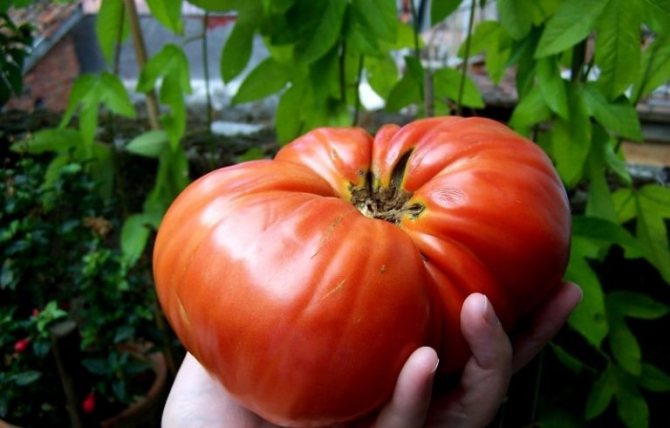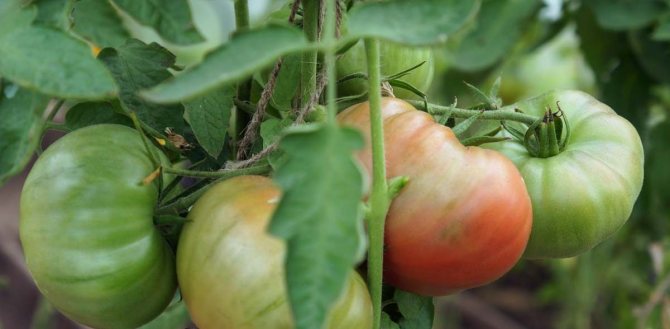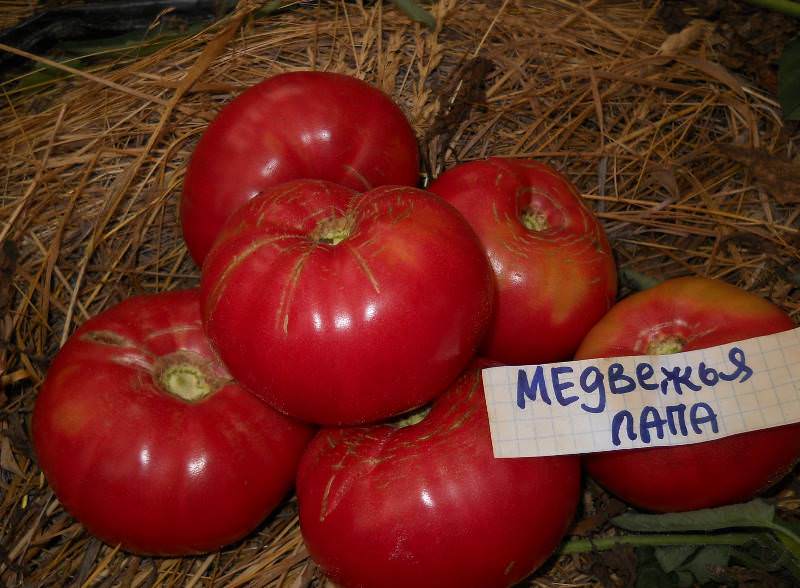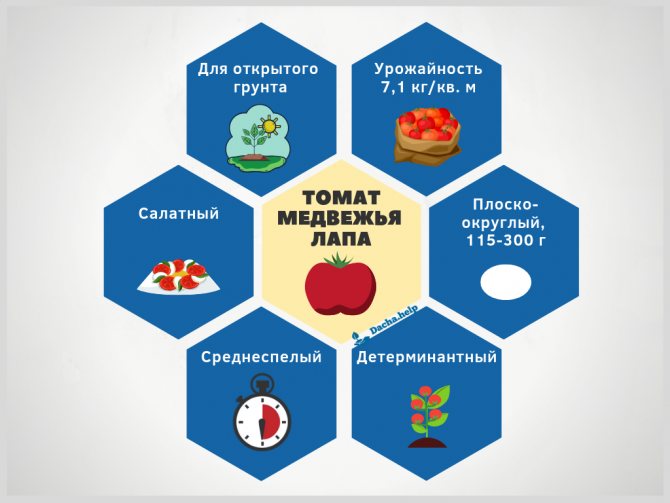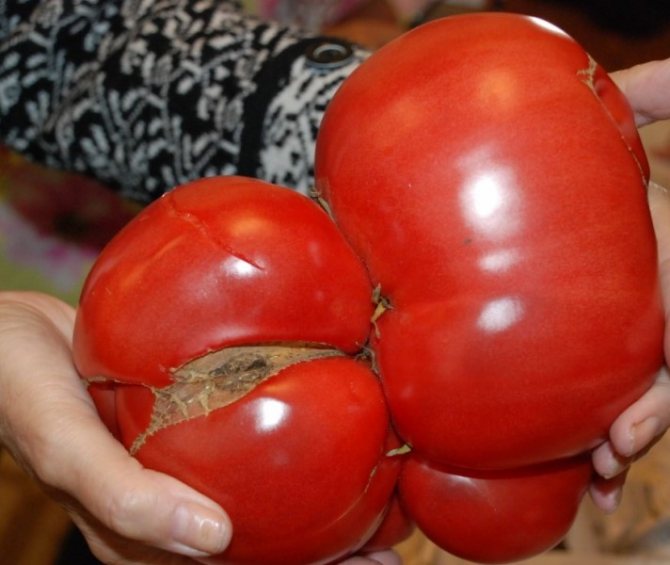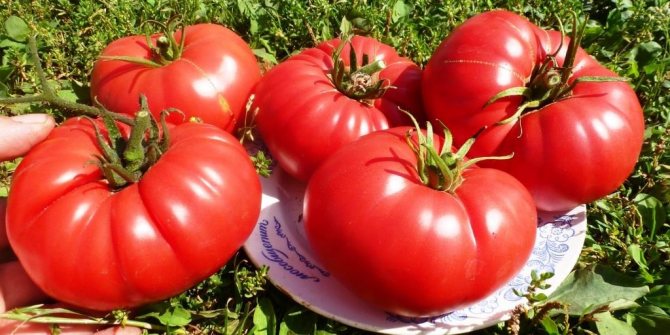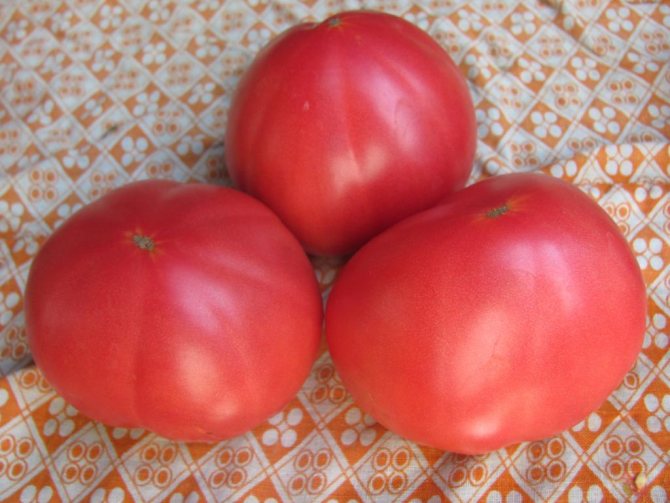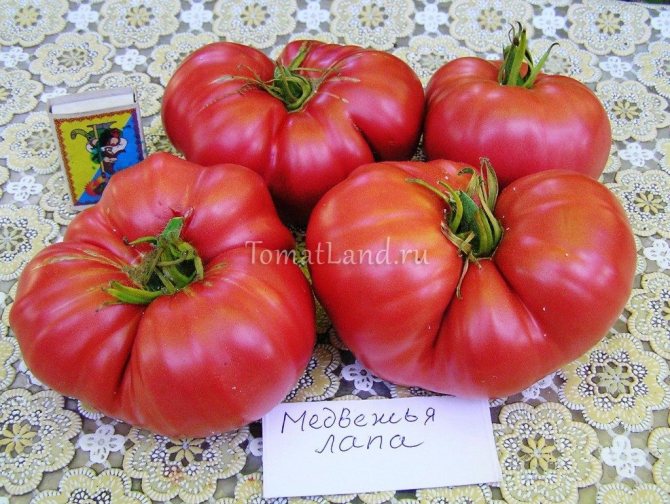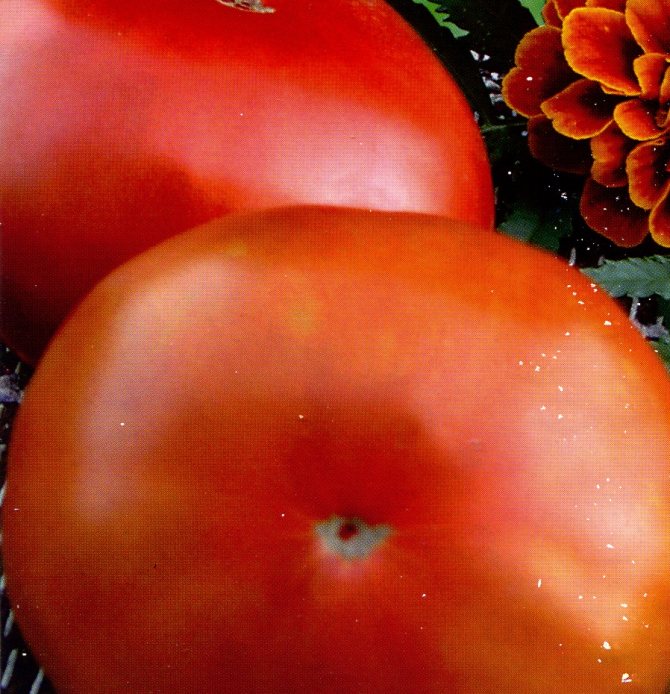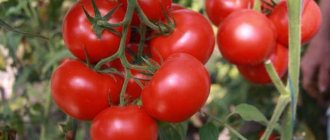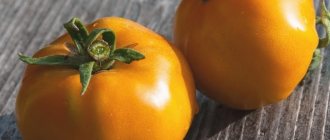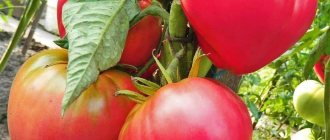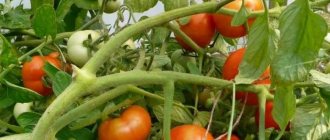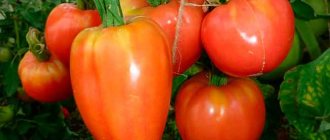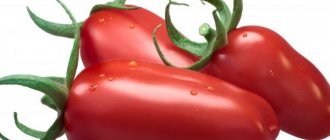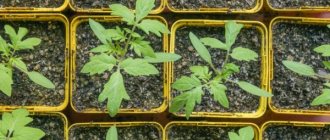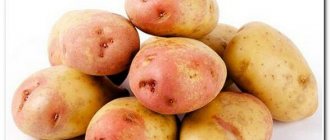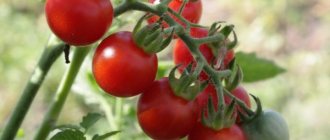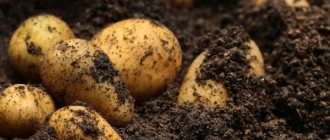Vegetable growing »Tomatoes
0
803
Article rating
Considering various varieties of tomatoes, most often, experienced gardeners choose those options that have large fruits. One of these varieties is the Bear Paw tomato. Due to its unpretentiousness, it deserves great attention, since it does not need feeding and frequent watering. The original name of the Bear's Paw tomatoes was earned due to the fact that the leaf has a shape that visually very much resembles the paw of this animal.
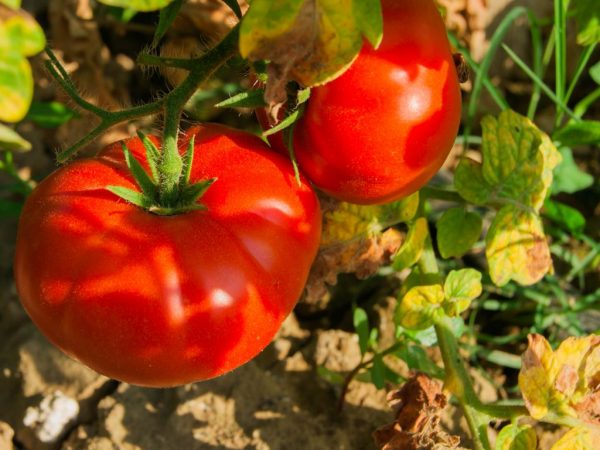
Description of Tomato Bear's Paw
Varietal characteristics
A similar variety of tomatoes is a favorite option for summer residents due to the fact that it does not require special attention. Moreover, its yield is high. Before considering how to properly grow this variety and care for it, you should consider its properties.
The Bear Paw variety has the following external properties:
- tomatoes can have a bush, the height of which is from 1 to 2 meters;
- the leaves are huge, carved and have an interesting shape;
- the fruit has an oval or round shape, which is slightly flattened;
- the average weight of one tomato is 250-500 grams, which is a great indicator;
- this tomato has a deep red color, but there is also a certain type of plant that can have pink fruits;
- the pulp is dense in structure, but at the same time soft;
- if we consider such an indicator as yield, then Bear Paw tomatoes on one bush give at least 10 fruits;
- a tomato of this variety will be strong and sweet enough;
- Bear Paw tomatoes belong to late-ripening varieties, which means that after planting, at least 115-120 days should pass by the first harvest of vegetables.
The characteristic and description of the Bear's Paw tomato does not end there, since it is worth mentioning such a nuance as the excellent transportability of the fruit. After the tomatoes are plucked from the bush, they will remain for a long period of time and practically do not deteriorate during transportation over a long distance.
- The variety belongs to tomatoes with medium early ripening.
- High-yielding.
- Indeterminate shrub, which can exceed a height of two meters, while the entire stem and branches are densely covered with green mass.
- Fruits can weigh 800 grams. They ripen in a cyst 3-4 pieces. They ripen all summer before the cold weather.
- The taste and aroma are pleasant.
- Resistant to the main tomato diseases.
- It tolerates drought well, but with proper watering, the harvest is always larger and the fruits are tastier and juicier.
- The shape of the fruit is round, flat, with ribbing in the area of the stalk. In the phase of full maturity, the tomatoes are rich red. The skin is not rigid, the flesh is fleshy. There are a lot of seeds in tomatoes.
- Summer residents praise the Bear Paw variety for its delicious tomatoes, which make excellent tomato juice and sauces. But even fresh tomatoes in salads are not inferior in their taste to those that have been processed.
Reviews of gardeners indicate that Bear Paw is a fairly high-yielding crop. From one bush per season, you can collect about 30 kg. fruits.
Detailed characteristics of tomatoes:
- shape - flat-round, with ribbing at the stalk;
- color - deep red;
- pulp - fleshy, juicy, aromatic;
- taste - spicy, with a slight sourness;
- weight - 600-800 g.
By their purpose, Bear Paw tomatoes are universal crops. They are ideal for fresh consumption, preparation of hot dishes, salads, pastries, tomato juice. Due to their size, tomatoes of this variety are not used in whole-fruit canning, however, they make delicious winter sauces and pastes.
In many articles, you can find information that the Bear's Paw tomato is a variety of amateur selection. However, it is enough just to get acquainted with the official information of the State Register of the Russian Federation, where both the date of the variety recognition and its authors are clearly indicated. The tomato was created by a team of Novosibirsk breeders under the leadership of V.N.Dederko.
In addition to the well-known scientist and entrepreneur, A. A. Yabrov and O. V. Postnikova are among the authors. The variety received official registration in 2005, is intended for growing in the open field of small farms in all climatic regions. Of course, in the Far North, tomatoes do not grow in beds, but where the climate does not allow, this variety is grown in greenhouses.
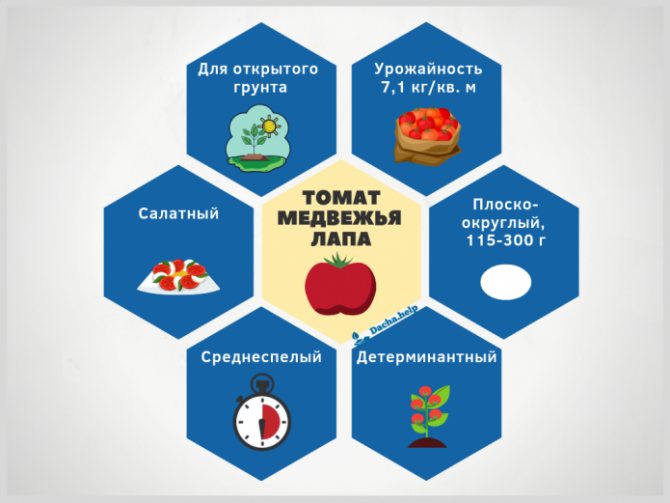

Brief description of the tomato variety Bear's paw according to the State Register
According to the entry in the State Register, the variety belongs to the determinant variety, but the fact that the bush can grow up to one and a half meters makes many gardeners doubt this and lead the plant like indeterminate tomatoes. Forming a bush and tying up shoots are required. The stems are densely covered with large dark green leaves.
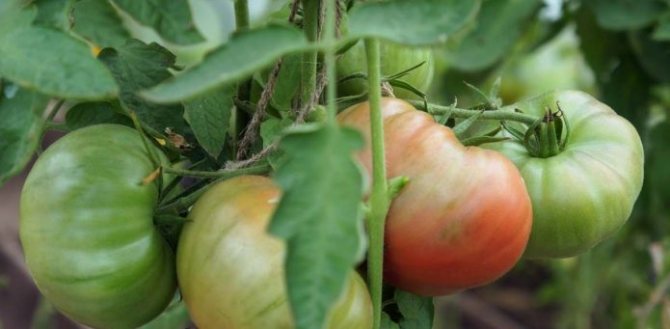

The brush can contain 5-6 tomatoes, which makes it very heavy
In terms of ripening, the variety belongs to the mid-season: the first fruits are ready for harvest in about 110-115 days after germination. Fruiting is long, ends with the arrival of frost. The fruits have a flat-round shape, practically without ribbing, and are distinguished by a very fleshy structure.
Contains three or four seed nests, dark red in color. The fruits are juicy, large, mainly weighing from 120 to 300 g, some grow to half a kilogram and a little more. Their taste is sweet, with a slight sourness, it is rated "excellent", the main purpose is salad. The excess harvest is processed into tomato juice, pasta, various sauces. Tomatoes can also be removed brown: they ripen well in room conditions.
The yield is average, slightly above 7 kg / m2. True, for very many varieties of V.N. Dederko in the State Register, clearly underestimated yield indicators are indicated, often enthusiasts collect much more tomatoes. In addition to the good cold resistance inherent in most Siberian tomatoes, the Bear's Paw is also characterized by increased heat resistance, as a result of which it is successfully grown in the southernmost regions.
Resistance to most diseases is above average.
The Bear Paw variety is a high-yielding tomato. From one bush per season, you can collect about 30 kg of fruit.
Overview tomatoes are intended for cultivation in unprotected soil in southern regions and areas with a temperate climate.
In the northern strip "Bear Paw" is grown only in greenhouses and hotbeds.
Pros of the variety
Numerous reviews indicate that Bear Paw tomatoes are in great demand, and do not forget about their benefits. The main advantages that are inherent in tomatoes include:
- the Bear's Paw tomato has quite large fruits with a pleasant sweetish-sour taste;
- the variety has good yield indicators;
- reviews of summer residents about the Bear's Paw tomato indicate that this species has excellent immunity - this is what allows them to feel good during periods of drought and heat;
- the plant is quite resistant to all kinds of diseases.
Minuses
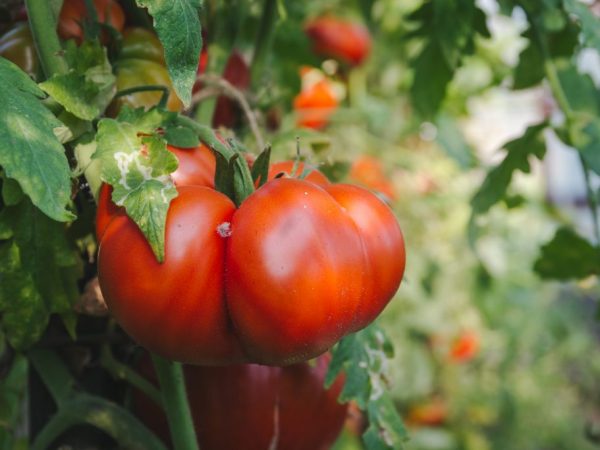

The sour taste of the fruit can be considered a disadvantage of the variety.
Despite such a wide list of advantages, one should not forget about some of the disadvantages that this species has few. The main disadvantages of Bear Paw-type tomatoes are:
- a certain sourness prevails in the taste of the fruits of this variety, which not all people like;
- considering the description, it is worth paying attention to the fact that the height of the bushes is quite large - this leads to the fact that they need to be constantly formed and made for them a strong support.
The description of the Bear Paw tomato indicates that such a variety is a popular and unpretentious option for growing in your own garden. Sometimes there is even a situation when this variety is planted in an ordinary garden.
Tomatoes: advantages and disadvantages
Tomato Bear's Paw fell in love with vegetable growers for a large number of advantages.
The pluses of the variety include:
- large mass of fruits;
- high productivity;
- spicy plus;
- transportability;
- drought resistance;
- shelf life;
- disease resistance.
It is also worth noting the value of this tomato variety. Bear Paw tomatoes have beneficial properties. When they are used, the work of the heart, gastrointestinal tract, and kidneys is normalized. In addition, the vegetable prevents the development of oncological tumors and neoplasms in the human body.
Tomato Bear's Paw, of course, is one of the varieties loved by many amateur gardeners, since it has a lot of undeniable advantages. Among them stand out:
- large-fruited;
- excellent taste;
- good adaptability to changeable weather, including extreme heat;
- ease of care;
- resistance to most diseases;
- good preservation of the crop.
Productivity remains a controversial point: it is, of course, not bad at all, but record indicators can be achieved only with intensive care during the best seasons. The reports that up to 30 kg of tomatoes can be removed from one bush raise very strong doubts. A clear disadvantage is the tendency of tomatoes to crack in conditions of heavy rain or over-watering.
Undoubtedly, a feature of the variety is the ability to bear fruit normally both in cool weather conditions and in extreme heat, including tolerating drought. This distinguishes it from many varieties, including "siblings and cousins", that is, tomatoes created by the same team of authors and are, to some extent, analogs of the Bear's paw.
In addition to the variety under consideration, the Heavyweight of Siberia, Sevryuga, Alsu, Babushkin's secret and other varieties are excellent natives of Novosibirsk. All of them differ from each other in details, and by the totality of characteristics they are quite comparable. Some are heart-shaped, others are pink or crimson in color, others have increased productivity, etc.
In general, the Bear's Paw, like all the named varieties, is an excellent choice for an amateur gardener living in any region, including those who do not have much experience in growing tomatoes.
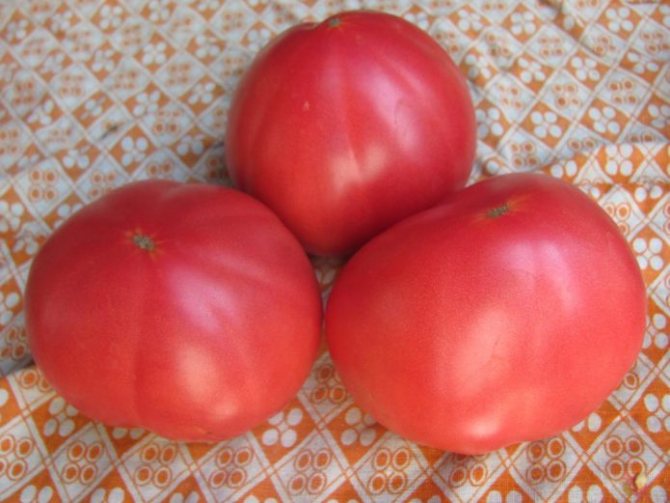

Tomato Babushkin's Secret - one of the "little brothers" of the Bear's Paw - is excellent in most characteristics
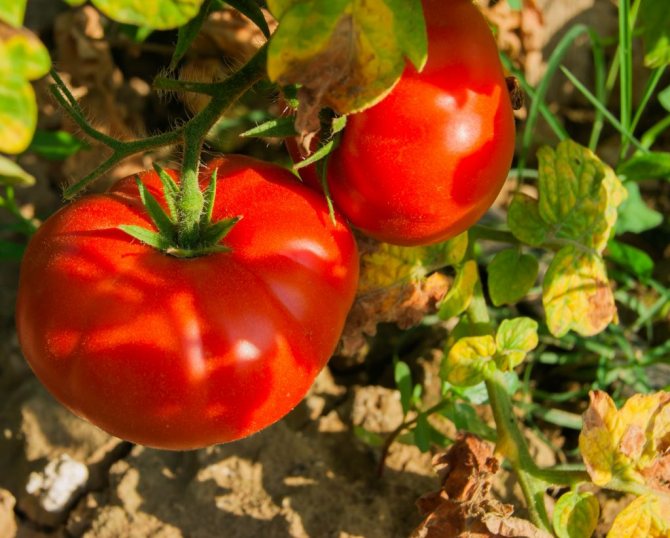

The main advantages of the Bear's Paw tomatoes:
- Large fruits;
- Juicy fleshy pulp;
- Intense taste and bright aroma;
- Excellent yield;
- Resistant to cold and heat;
- Immunity to viruses and fungi.
The disadvantages of the survey variety include:
- Sour tomatoes;
- Bushes require shaping;
- The branches must be tied to supports or pegs.
Description of the correct cultivation of seedlings
Considering the numerous reviews of a particular variety, many gardeners just make a choice in the direction of a certain type.But an equally important role is given to the peculiarities of its cultivation, since many people often want to acquire a species that will be easy to grow and care for. Growing seedlings of this tomato should be done around the very beginning of March.
- humus;
- garden land;
- sand;
- peat.
To create such a sweep, all components must be taken in equal quantities. The planting material that you will plant in the prepared soil is preliminarily recommended to be disinfected and checked for germination rates. The seeds must be planted in a slightly damp ground and the container should be covered with some kind of film on top.
After that, the containers should be hidden in a warm enough place for about 5-6 days. This will allow the germination process of the first shoots to take place. As soon as this happens, the film should be removed, and the containers with sprouts should be placed in a lighted place. In order for this culture to develop well, the air temperature should be maintained within 23-240 C.
Tomatoes, grade Bear's paw. Tomati, variety Vedmezha paw
Tomato "Bear Paw" - Pumpkin
The best yielding varieties of tomato giants 2017
Tomato Bear's Blood: the history of the creation of the variety


Tomato Bear Blood
The Bear Blood variety was bred by several breeders. Crossbreeding took place in Nizhny Novgorod and before it succeeded, a huge amount of work was done, resulting in a new variety. The new variety has passed all the checks. It turned out to be fruitful, well adapted to a temperate climate and small changes in the environment. Bear's blood has only recently started to be marketed, but the variety is slowly gaining popularity.
Pests and diseases
The Bear Lapa tomato variety is endowed with high parameters of protection against diseases. Its immune system fights bacterial and viral infections. The variety does not lend itself to diseases such as black leg, apical rot, stem necrosis, powdery mildew, mosaic and others.
However, the plant should be protected from insects. The most dangerous pests that can harm Bear Paw tomatoes are:
- Colorado beetle;
- slugs;
- spider mite;
- bear;
- aphid.
So that the given insects do not harm the variety, at the first signs of their appearance, it is necessary to use biochemical preparations.
Varietal tomatoes are resistant to the following diseases:
- Verticillosis;
- Tobacco mosaic;
- Late blight;
- Fusarium wilting.
Preventive measures will help protect plants from various fungi, infections. Before planting the bushes, the soil in the beds is treated with a hot solution of potassium permanganate. Mulching the soil with peat or straw reliably protects tomatoes from the development of root rot. If the "Bear's Paw" tomatoes are grown in greenhouse conditions, the windows of the greenhouses must be regularly ventilated to prevent the appearance of white and gray rot.
Tomatoes need to be protected from pests such as:
- Aphid;
- Medvedka;
- Colorado beetle;
- Thrips;
- Whitefly;
- Paputine mite;
- Slugs.
Soapy water will rid tomatoes of aphids, and a solution of ammonia will remove slugs and Colorado beetles. Special aerosols will help to cope with flying insects.
IMPORTANT: It is possible to process the bushes with chemicals only before the beginning of fruiting.
After the appearance of ovaries on the plants, preference should be given to folk methods:
- Decoction of onion peel;
- Tincture of celandine;
- Decoction of chamomile.
It is necessary to process not only damaged plants, but also nearby tomatoes.
What dangers happen
Plants of this species have excellent disease and pest resistance properties. But still, due to the wrong care, troubles can happen to them.
See also
Description and characteristics of the Klondike tomato varietyRead
They can be attacked by aphids, beetles, ticks, slugs, caterpillars, bears. In this case, the bushes should be treated with various agents until the insects are completely eliminated. You can find out about them from the sellers in the store.
Among the diseases are known late blight, fusarium, spotting, fungus, rot. Strong effective methods can be used during flowering. But during fruiting, it is better to treat with decoctions of chamomile, celandine, onions. Everything that grows in the greenhouse is sprayed and fed.
Planting tomatoes in open ground and care
After the seedlings are ready for planting in the ground, the process of planting them should fall approximately in the first half of May. During this period, this fruit species can be planted in a greenhouse. It is by this period that the soil will be warmed up quite well. Please note that no more than 3 bushes should fall on 1 m2, as this can protect such a species from the development of all kinds of diseases and will allow you to simply take care of it. The peculiarities of disembarkation and care include:
- the planting density should not be dense so that caring for the bushes is simple;
- watering tomatoes should be done about once a week and, if possible, with settled water, at least at the initial stage of their growth;
- it is imperative to monitor the development of the stems, since if necessary they should be tied up;
- for a quick set of future fetuses and their normal development, special growth stimulants should be used.
Reviews of those who were involved in the cultivation of Bear Paw tomatoes indicate that this is an excellent option for planting in the garden, since such a Siberian species is unpretentious and has excellent taste.
Care features
Taking into account the description of the variety, the fruits ripen early. Since they are constantly growing, they need quality care. If the care is of poor quality, then you should not expect a good harvest.
- Tomatoes love good watering. You can even water them three times a month, but generously. A nearby stream or wells are used for water. Most importantly, do not pour ice water.
- It is imperative to weed the weeds in the greenhouse, as they suck out nutrients and contribute to the reproduction of pests.
- Periodic loosening of the earth. This is done in the first days after planting, during flowering, and after - as soon as the soil becomes flat again.
- Fertilizing crops is important. During flowering, nitrogen should be included in the top dressing, and when the fruits grow - potassium, phosphorus. Peat, humus, sand, chicken droppings are also added to the ground.
- In the summer, during the day, you need to open the windows and doors of the greenhouse to ventilate it.
- Sometimes pinching is required, due to which the process of fruit ripening is accelerated. The processes and all the lower sheets are removed at least twice a month.
- Bushes that are too tall should be tied with ropes. In the northern regions it is better to raise the stem high off the ground, as the nights are cold and with dangerous dew.
Large fruits and tall bushes require more attention from gardeners. The result is a rich harvest.
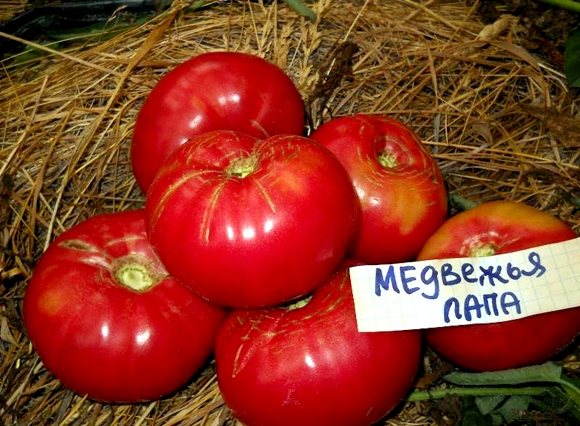

Harvesting and storage
The properties of the Bear Lapa variety are long fruiting. The first ripeness of fruits, as a rule, falls on the middle - end of July. At the same time, the plant does not stop forming new ovaries until autumn. Therefore, harvesting should be carried out periodically, as the tomato ripens.
The last product is removed before the first frost and sent for processing or storage. At the same time, an unripe crop can be removed from the bushes, since it comes perfectly at home.
For dosing a tomato, a dark and dry place is selected, with mandatory ventilation. The air temperature in the room should not exceed 23 degrees, and the humidity 70%. If these requirements are met, fresh tomatoes can be used until the New Year.
Having examined the Bear Paw variety from all sides, it is clear that this is a fairly respectable vegetable crop. If you choose the right cultivation method, tomato can be cultivated in all corners of Russia. At the same time, regardless of the growing area, the variety gives the same amount of yield of tasty, nutritious and healthy fruits.
Reviews of gardeners about tomatoes bear paw
Natalia. Prokopyevsk: “Bear Lapa is one of the most beloved varieties. I have been growing it for several years now and at the same time I am always satisfied. The plant itself is not demanding in care and is not very susceptible to diseases. Productivity is also excellent. Marketable tomatoes are sold quickly. And the piquant taste complements any dish with a unique zest ”.
Tomato Bear's Paw is a drought- and cold-resistant variety with excellent-tasting fruits. Its yield depends on the quality of care, but even for a novice gardener, it can be very decent.
Judging by the numerous reviews of vegetable growers, varietal tomatoes are very tasty and healthy. A distinctive feature of the Bear's Paw tomatoes is a very high yield. The fruits can be kept fresh for a long time, they ripen perfectly at home.
Tomatoes Bear's Blood: Care
Caring for the Bear Blood variety is very simple and basic, therefore it does not require much time and effort.
- The bush should be formed with only one central shoot, and the rest should be removed.
- It is imperative to loosen the soil, since the root system needs air.
- It is necessary to clean the soil from weeds and other debris.
- Setting up a support and tying a bush is necessary when there are many brushes and fruits on the bush. Otherwise, the brushes may break off along with the fruit.
- Watering should be moderate, in no case should excess water be introduced into the soil, as the root system may begin to rot.
- After transplanting into the ground, mulching must be carried out using straw.
- Fertilization is carried out approximately 1 time in 30-35 days. You can use organic or complex dressings.

